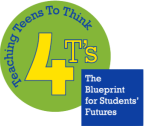UPS has several types of positions that do not require a college education, including Package Handlers, drivers and mechanics. As a driver, you would drive a commercial or deliver truck to pick up and transport packages and positively interact with customers while making deliveries that require signatures. Drivers must also undergo extensive training to understand how every aspect of the UPS system works from collecting signatures to keeping track of packages.
As a package handler, you would be responsible for unloading tractor trailers and loading delivery trucks, and as a mechanic, you would be expected to maintain and repair tractor trailers and delivery trucks.
How much would you earn?
A UPS worker’s income is variable based on location and how long an employee has been with the company, but UPS pays about $10 per hour to package handlers and related positions, and a driver can make between $15 and $30 per hour depending on location and experience within the company.
Requirements of package handlers, drivers, and mechanics:
No college education is required, but UPS often hire from within the company, meaning you will most likely need to get a job as a package handler and work your way up to becoming a mechanic or driver. For both a package handler and a driver position, you will be required to take a drug and physical test to prove that you are drug-free and physically able to lift 70 lbs. regularly.
If you’re pursuing a job as a driver, you may need a special commercial drivers’ license, and you will be required to pass a Department of Transportation exam and be able to drive a manual transmission vehicle, according to the UPS Driver job description.
Mechanics must be at least 18 years old, and it is preferable that they have experience working with fleet and diesel engines. They must also have their own set of tools, pass a drug test and be able to speak and write English well. Look for more information about UPS jobs and their descriptions here.
Opportunities for growth:
There are training programs available for employees interested in advancing their careers, including training for corporate positions or specific skill sets that can help you grow in and outside of the company. UPS spent $565 million on training programs last year to train its employees and support its “promote-from-within culture.”
Work conditions:
All package handlers start out as part-time employees, who usually work 3-5 hours per day Monday through Friday. While some package handlers work from about 3-8 a.m., most begin their day at 4 or 5 a.m. As a driver, you would work about 8-10 hour days per day every day from 8:30 a.m. to 4 or 6 p.m. During the holidays, most employees, especially including package handlers and drivers, work overtime, but UPS tries to limit overtime by hiring seasonal workers.
Benefits:
UPS offers benefits to its full- and part-time employees, and although these health insurance plans vary, benefits offered can include:
Medical, Dental, Vision, Prescription Drug Program, Life Insurance, Business Travel Accident Insurance, Healthcare Spending Accounts and more. For a complete list, see the UPS benefits page.
UPS offers an Education Assistance Program, which provides employees with up to $25,000, or $5,250 per year, to pay for college tuition. Full- and part-time employees are eligible to participate at any of the available locations in which a UPS partner school is located, including in Springfield Gardens, NY. Employees can begin using their tuition aid as soon as they begin working for UPS. In 2014, UPS provided about 14,000 students with $16 million in tuition aid, and the company has invested more than $200 million in the assistance program since 1999.
Keep an eye out for next week's article, which will include more alternative career options that don't necessarily require more than a high school education.
-Hope Swedeen
What are some things that interest you about this career path? Are there aspects of this career that you’d like to learn more about?

 RSS Feed
RSS Feed